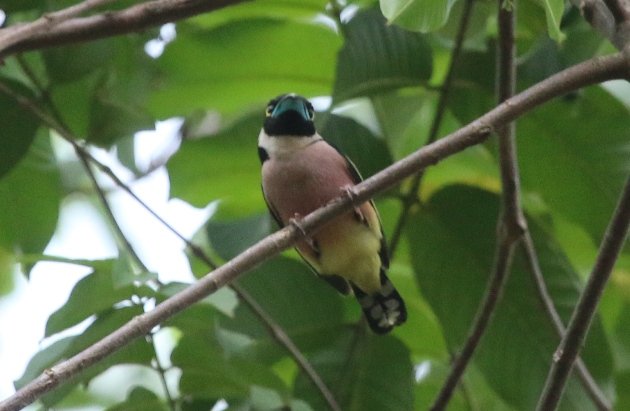
Since this is the season of love and harmony and all things nice, I sincerely and originally had planned to write an equally nice, loving and harmonic post on a beautiful group of birds that’s mostly found in SE Asia, the broadbills. Turns out this post will not be so much about the birds themselves than about the striking disharmonic off-key note that pierces our eardrum the moment we see the birds in the field and then look up their name in our field guide. Clearly, this is the bird group against which the fiercest common name crimes in the avian world have been committed. The birds are wonderful, yet the names are worthy of the blandest Old World warblers – and that’s an insult to the warblers. Even the group’s namesake feature, the broad bill, is ill-chosen. Granted, they do have broad bills, but they surely aren’t the only group with such a feature. But what is even worse and adds insult to injury is the fact that their bills could have, in most species, inspired so much more than just “broad”. I’ll show you by means of the three broadbill species I recently encountered on a trip to the island of Borneo.
The first of the three species I visually met and photographed – although poorly due to the distances involved – is called Green Broadbill. Yup, that’s it, Green Broadbill. So it’s a broadbill and it’s green and the name suggests that this is all there is to it. Seriously? Now, first things first and that’s not the green part but the broadbill bit. As the following image clearly proves, the bill of this broadbill is broad, indeed.
A broad bill on a green broadbill
But now comes the lateral view and – lo and behold – where’s the bill? Gone, bird magic.
A broad bill gone on a green broadbill
So, what is more significant to you, my valued reader: the fact that the bill is broad or that the species has no lateral bill whatsoever, just a surreal green feathery bump? Exactly, this is a shortbill and not a broadbill. Clearly, the Green Broadbill can’t be the source of the family’s common name because no one in their right state of mind would find the breadth of that bill remarkable. And regarding the sense and sensibility of the denominator “green”, I’d like to kindly refer you to another image of the bird:
Do you consider this colour to be “green”? Isn’t it considerably closer to “emerald”, “jade” or “awesome”? You can’t seriously lump this colour with Phylloscopus-green and still consider yourself a birder. Fact. By the way, I am pretty stoked that the German name of the bird, Smaragdbreitrachen, translates to Emerald Broadthroat. Yes, the “throat”-thing is debatable, but … emerald!
The next example of a momentary lapse of reason (yes, I’m a kid of the 80’s) on the side of the naming party is the Black-and-red Broadbill, the second of my Bornean broadbill trio.
A prime, fine Black-and-red Broadbill
I find it completely plausible that a scientist would spot this bird and say: Oh, this is a surprisingly broad bill, and look: the bird is red and black. Geez, I’ll just have to name it Black-and-red Broadbill, there is no way around it.
Kidding. In case you haven’t noticed.
Now, I do get the black-and-red part, although I would have preferred something a bit more elaborate, like “vinaceous” or something. But again, the dominance of the “broad” evades me as far as the bill is concerned. This, clearly, is one of the most amazing bill colourations of any bird, anywhere. Who cares if it is broad or not?!
The third broadbill I encountered is quite possibly the worst-named bird in the world, the Black-and-yellow Broadbill. This is a bird so insanely coloured that each camera’s auto focus mistakes it as being unreal and therefore tends to ignore it, going for surrounding branches instead. Unless of course, you are not me but Duncan (I highly recommend following that link to Duncan’s gallery and come back a bit later).
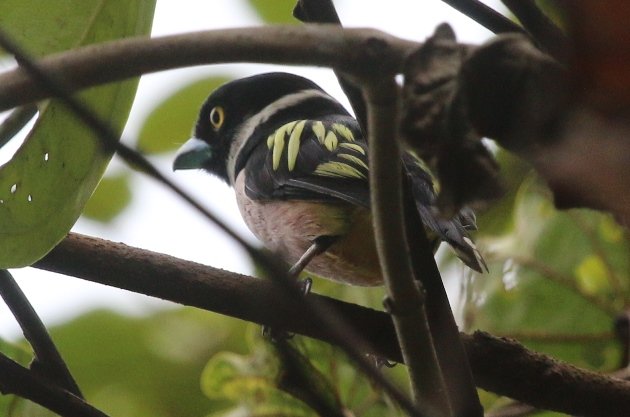
Yeah, the black and the yellow bits are totally the most striking thing about this broadbill.
This species is such a firework of psychedelic revelations that I find it hard to pick a feature from where to start writing about it. Oh wait, someone has determined that for me already, it’s got to be the black and the yellow, right? But if you look really, really hard, you may on bright and sunny days occasionally spot some pink as well, maybe even a white collar and a peculiar tail pattern. And then, there’s something funny about the bill as well. I’d probably notice how broad it is if it wasn’t for this unearthly steel-blue colour that’s just so annoyingly distracting. I know it is sinful to heavily crop an out-of-focus shot, but let’s face it: my dirty deed pales compared to what the dude in charge of naming the bird did, so I feel no remorse and shame in making you take a closer – albeit blurry – look at that totally insane bill. And then repeat the name: Black-and-yellow Broadbill.
*Sigh*


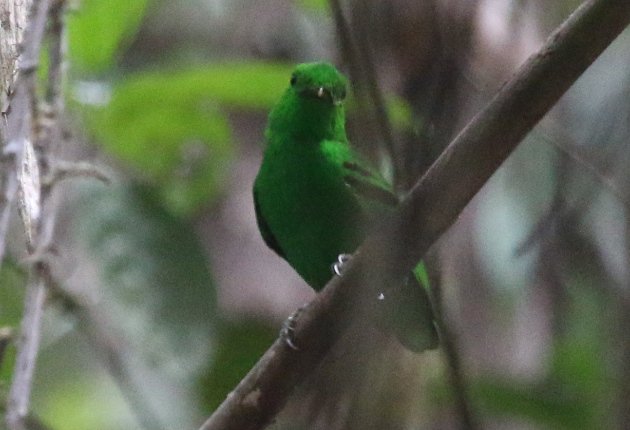
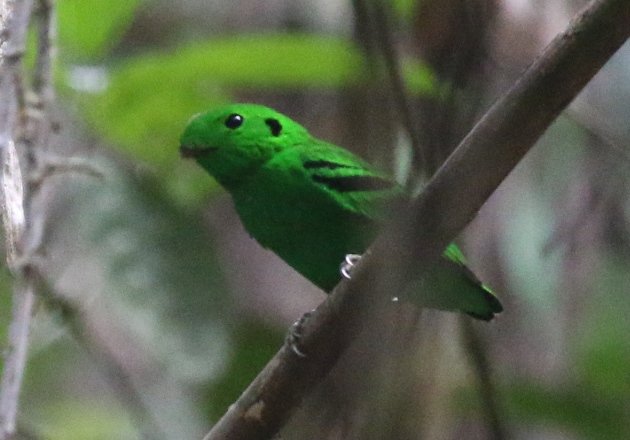
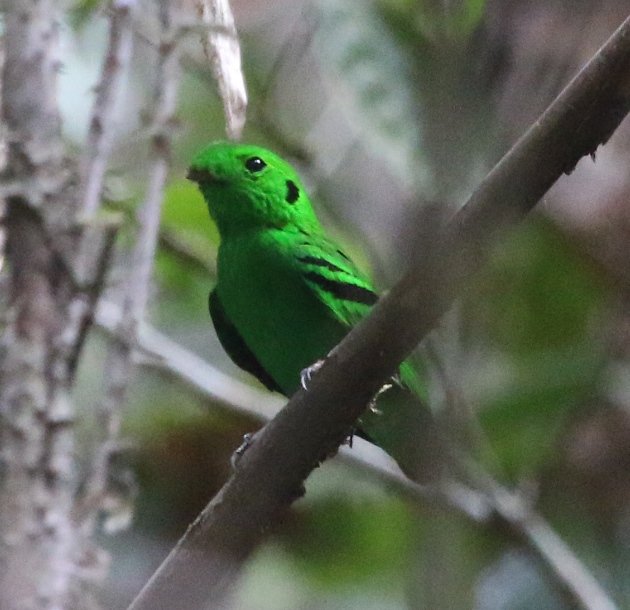
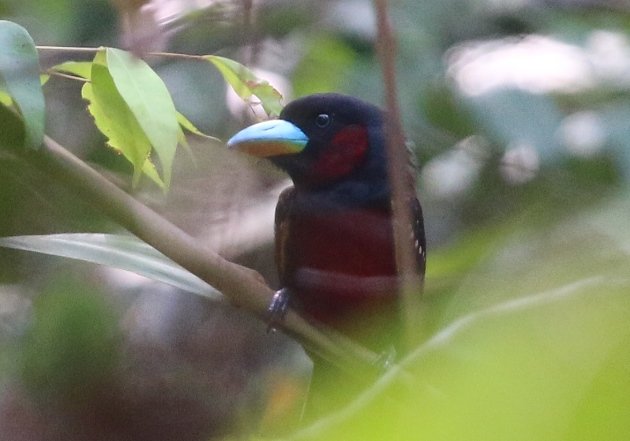
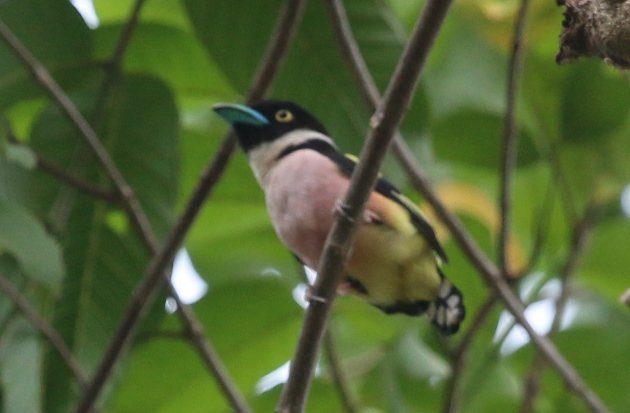
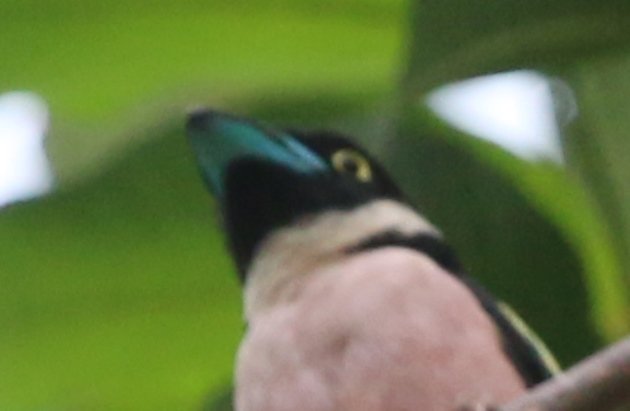
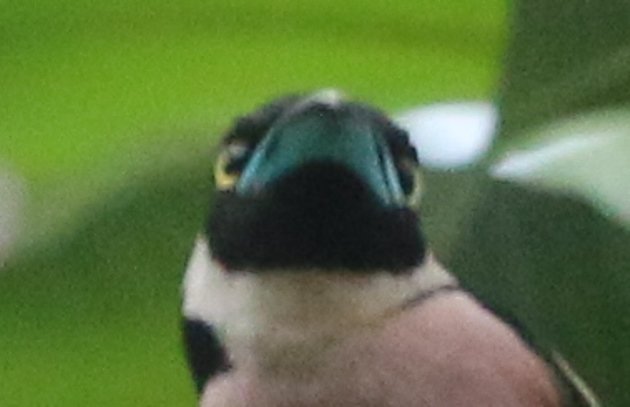











On this snowy white day in the California mountains, you have blown my mind. Thank you.
You are more than welcome!! Comments like yours are the reason I am blogging! Enjoy the snow though – here in Germany we have not expericned winter yet, with temperatures still above 10°C (50°F).